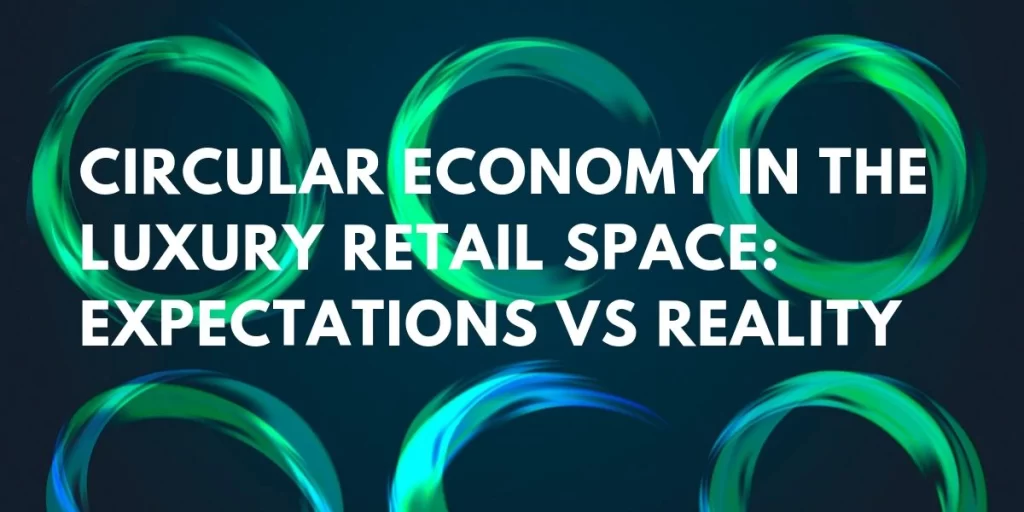The fashion industry is a $2.4 trillion-dollar industry that employs approximately 60 million people worldwide and, according to the UN Alliance for Sustainable Fashion an organization committed to reducing the negative and social impact of fashion, the industry also accounts for 8-10 percent of global carbon emissions. That is more than all international flights and maritime shipping combined. As climate change awareness spreads, more companies are getting on board with becoming part of a solution. This includes luxury brands as they find ways to reduce the amount of resource consumption and environmental impact.
What is a Circular Economy?
A Circular Economy is a regenerative economic system with the goal to minimize waste by re-using, repairing and recycling and keeping resources in use for as long as possible, withdrawing the maximum value from them while in use, then recovering and regenerating products and materials at the end of each utility life.
Basically, manufacturers and brands need to do two things; deal with the waste they create and use renewable energy. Sounds easy enough but it can be quite challenging for some. Many companies are still using the traditional linear economy “take, make, waste” of finite resources, which is causing a massive strain on our planet’s natural resources, creating environmental pollution and worsening climate change.

Industry and Cultural Reform
The fashion industry loses about $500 billion of value every year due to the lack of recycling and clothes that are thrown into landfill before ever being sold. Many initiatives revolve around companies holding themselves accountable for their waste in a variety of ways, such as increasing the use of recyclable materials.
Many organizations have been created to introduce, inform and instruct companies how they can begin the work towards a more environmentally responsible process and ways to adopt the circular economy. The Ellen MacArthur Foundation’s mission, for example, is to work with business, government and academia to build a framework for an economy that is restorative and regenerative by design. Positive Luxury is another example of an organization that encourages sustainability practices and partners with luxury brands such as Louis Vuitton, Christian Dior, YSL Beaute, Aveda, Tag Heuer, IWC Schaffhausen among many others, by promoting their Butterfly Mark which is awarded to brands for their measurable impact and commitment to sustainability and performs a periodic assessment process ensuring brands are properly following sustainability guidelines.
Companies like Kering are taking measures to reduce their environmental footprint by promoting sustainable practices related to water consumption, air and water pollution, waste, and land use. Fast fashion titans H&M and Inditex (the owner of Zara) are also pledging to adopt better sustainability practices with Inditex even affirming they “will not send anything to landfills in 2020”. TheRealReal, an online luxury authenticated consignment shop, is making gently used luxury fashion a real trend. Chopard, as mentioned in our sustainability blog post last year, has also demonstrated industry leadership by using 100% ethical gold in their collections. Chanel banned exotic skins and Louis Vuitton introduced waste reduction and recycling for leather, canvas, textiles, and gold plated metallics.
Genuine luxury is something that survives and is able to be passed on to the next generations. Luxury brands are naturally more sustainable and have long set the standard in design, quality of materials, craftsmanship, and processes that stand the test of time. The luxury industry has the power to make positive differences and play an exemplary role in building a circular model that benefits business, consumers and the environment.







